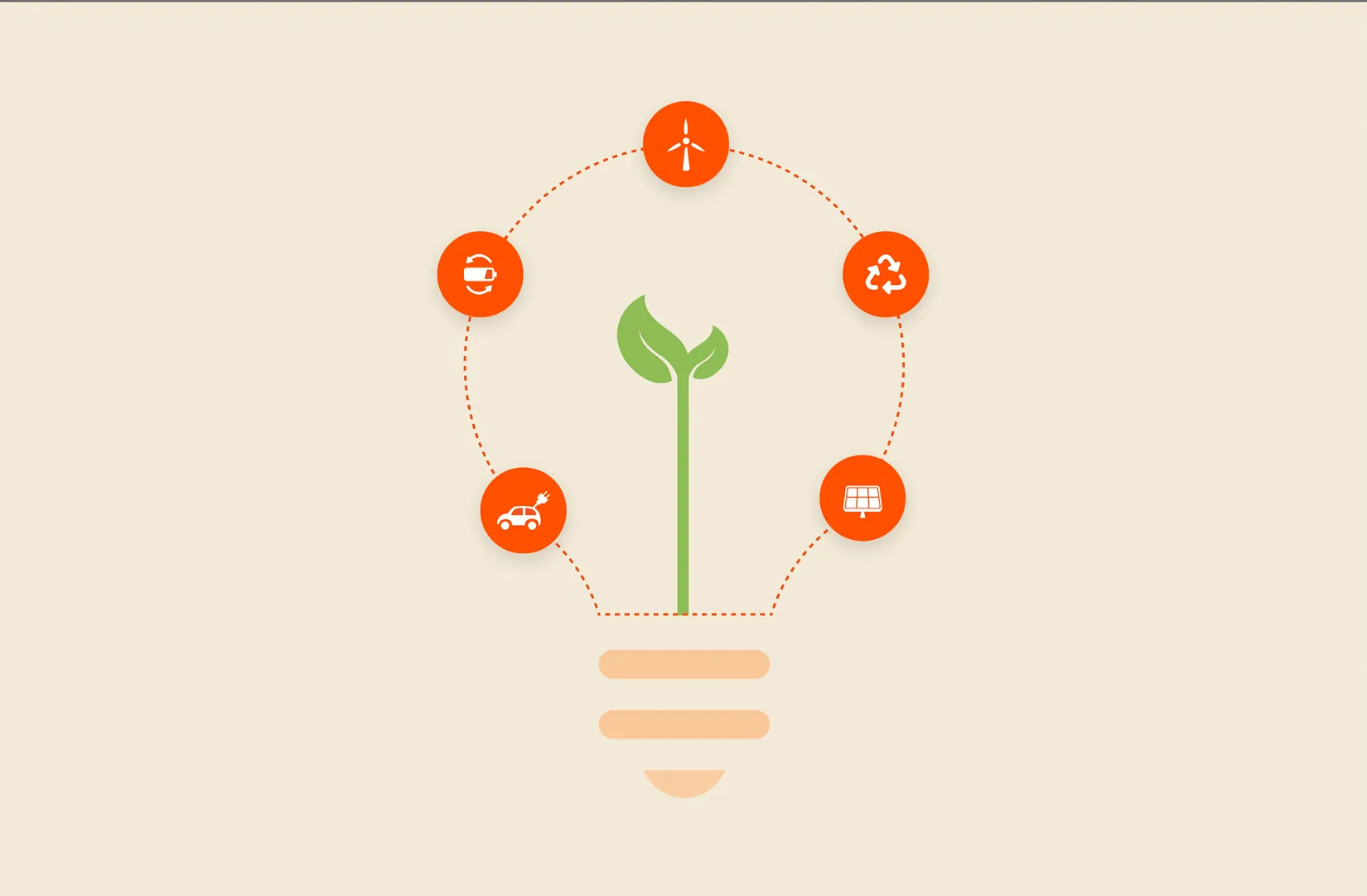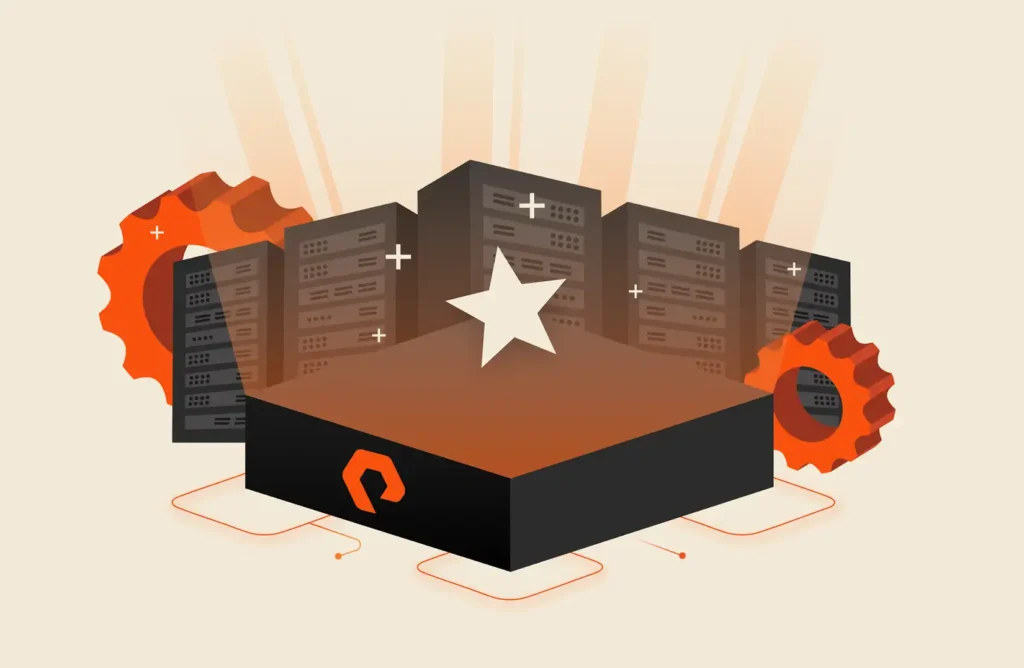Enterprise data is exploding—and data centers are growing to meet the demand. In 2025, it’s projected that data centers could consume 2% of global electricity.¹
As technology advances to meet new demands, particularly with generative AI, every part of the data center is ramping up in power:
- CPUs, network switches, and accelerators get more powerful with each new generation.
- Servers are increasing power usage, with faster processors and memory.
- Power-hungry accelerators are getting larger and hotter. Top-of-the-line accelerator cards can use hundreds of watts a piece. Some GPU varieties are even classified by power usage, with some requiring liquid cooling.
- Cooling requirements are increasing in kind to dissipate the ever-increasing power needs of these components.
- Storage infrastructure, which generally accounts for around 5% of data center energy usage.¹
It’s resulted in an increase of absolute power usage and a massive increase in costs.
In fact, power represents the largest ongoing, recurring cost for most modern data centers. This directly conflicts with enterprises’ goals (and in some cases, regulation requirements) to reduce carbon emissions and reduce footprints. As a result, data center design decisions are driven more by power constraints than any other factor.
Discover how Efficient IT Infrastructure Saves More Than Just Energy Costs >>
Power Utilization Is Driving Data Center Design
“At large scale, the limiting factor of any data center is power.” – Storage Unpacked podcast
I joined Chris Evans of the Storage Unpacked podcast to talk more about power utilization in the data center—and how Pure Storage can change the game.
Whether it’s an on-prem data center, a colo, or a hyperscaler, every data center has to be designed to specific power constraints. While theoretically possible, filling up all 42U in a standard rack becomes challenging due to power utilization and cooling costs. Power becomes the limiting factor, even at the rack level.
Hot spotting and layouts are important to keeping racks cool, but what about scalability? At what point are you compromising power efficiency for performance? In lieu of exotic cooling mechanisms, vapor chambers, or high-powered fans (that consume their own power), many are forced to run fewer units per rack per square foot. But how will that play out as data requirements continue to grow?
There’s an opportunity in the data center, and it lies in the one area where effective power utilization is going down, not up: data storage.
Data Storage Is Consuming Significantly Less Power per Terabyte Than Ever Before
If you have any performance requirements at all, and we all do, flash will be the way to get power-efficient storage today and into the future.
Until recently, spinning disk was how many data centers solved for dense storage at high power efficiency. But even as hard drives continue to grow in size incrementally, broad changes in the market are driving more significant change:
- The transition from disk (HDDs) to flash. The transition may be slow compared to consumer devices, especially in hyperscaler data centers, but it’s happening. New generations of flash are far more efficient per terabyte than spinning disk.
- The continued march of progress with flash, from MLC to TLC to QLC, and beyond, will only continue this trend by making each flash cell even more effective.
- Continued advances in hardware and software efficiency with regards to flash media management drive overall system efficiencies that utilize these technologies.
The approach Pure Storage® has taken to it is called DirectFlash®, and it’s how we optimize performance per watt while delivering unmatched storage densities. And it’s never been more evident than it is in FlashBlade//S.
What Is DirectFlash?
Storage is one of the few technologies where we, as an industry, have the opportunity to lower power consumption of the data center while increasing performance, density, and efficiency. But flash storage has a history problem. In a majority of cases, it’s masquerading as a spinning disk to fit into legacy products and protocols. Solid-state disks (SSDs) use controller chips with their own memory to make a complex array of NAND chips appear like one contiguous set of data blocks using a flash translation layer (FTL).
This is inefficient and creates additional layers that add to power usage.In contrast, DirectFlash is a system-level approach to flash media management, rather than a drive-level approach. And no other storage vendor is doing it better than Pure Storage and our highly efficient DirectFlash technology.

Sustainability
The New Era of Storage
Learn how Pure Storage can help
you lower your energy bills.
Weighing the Cost of Flash in the Data Center
Getting back to costs for a moment, if you run your own data center—without the acreage for a wind farm or massive solar panels—power costs are likely dictated by the grid you’re on.
Consider how consumers buy cars today vs. a few decades ago. Fuel economy, range, and emissions were not the deciding factors they are today. Yet, as gas prices have gone up in the US, consumers priorities have shifted.
The same can be said for IT consumers—and the higher the price of power, the easier it is to decide to move to a more efficient platform.
And as recent world events have made painfully obvious, energy prices can be highly volatile and customers that have focused on energy efficiency are better insulated from the shocks to the system.
Better Science: Getting the Most from the Watts You Use
By leveraging flash management at the system level, Pure drives efficiency in a myriad of ways.
Referring to Pure’s ESG report, CTO Rob Lee said, “If you peel back the covers on what leads to the environmental advantages, it comes back to the things that make us great in the first place—efficiency, density, performance, reliability.” The report showed how power utilization can go down, and performance can go up, when older equipment is upgraded and replaced.
Our latest offering, FlashBlade//S, takes that to the next level with:
- Integrated software and all next-gen hardware components. Pure’s DirectFlash technology and how it’s leveraged with TLC, QLC, and beyond create a significant amount of efficiency out of the raw media. As of right now, nobody else in the industry is able to deliver the same.
- Data reduction software. Our data reduction software and compression can do a lot for TCO and economics, and it plays a big role in efficiency, too.
- The density of the systems. Running fewer units per rack is made possible by the density of Pure’s flash storage. Pure is building systems that are three, four, five, and sometimes even 10 times as dense as the competition. If we can deliver a petabyte worth of storage with 5 times less peripheral hardware surrounding it, that system will be way more efficient.
Power utilization has been a core advantage of Pure from the start. Lee said, “All of these newly amplified advantages are derivatives of what we’ve been great at all along—everything our engineers do to make our products denser, cost-effective, performant, and more reliable.”
The changing tide of enterprise priorities is driving the sustainability conversation, but it’s one we’re ready for. And as Lee notes, “We’ll keep doing the things we’re great at and building even better products, and that gap will keep on widening.”
¹https://www2.deloitte.com/us/en/insights/industry/technology/technology-media-and-telecom-predictions/2025/genai-power-consumption-creates-need-for-more-sustainable-data-centers.html
Written By:







